A Bond Creating Summer
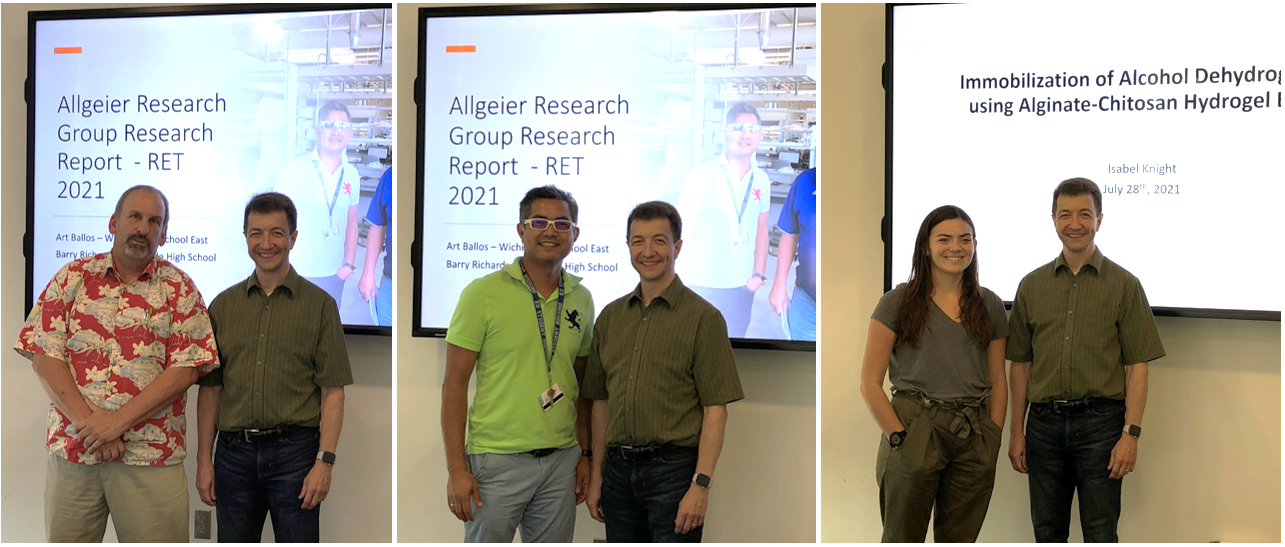
The summer of 2021 could not had been better at the University of Kansas (KU). The Allgeier group welcomed four new researchers - two undergraduate students and two high school teachers, who participated of the Research Experience for Undergraduates (REU) and Teachers (RET). Their experience involved laboratory work with hydrogels, including the synthesis and characterization of samples. Hydrogels are widely used in the biomedical field, in drug delivery and scaffold applications. Their mesh network regulates many of the most important properties, such as permeability and mechanical strength. At the Allgeier lab, Art and Barry used different approaches to study the properties of gelatin samples.
REU Students
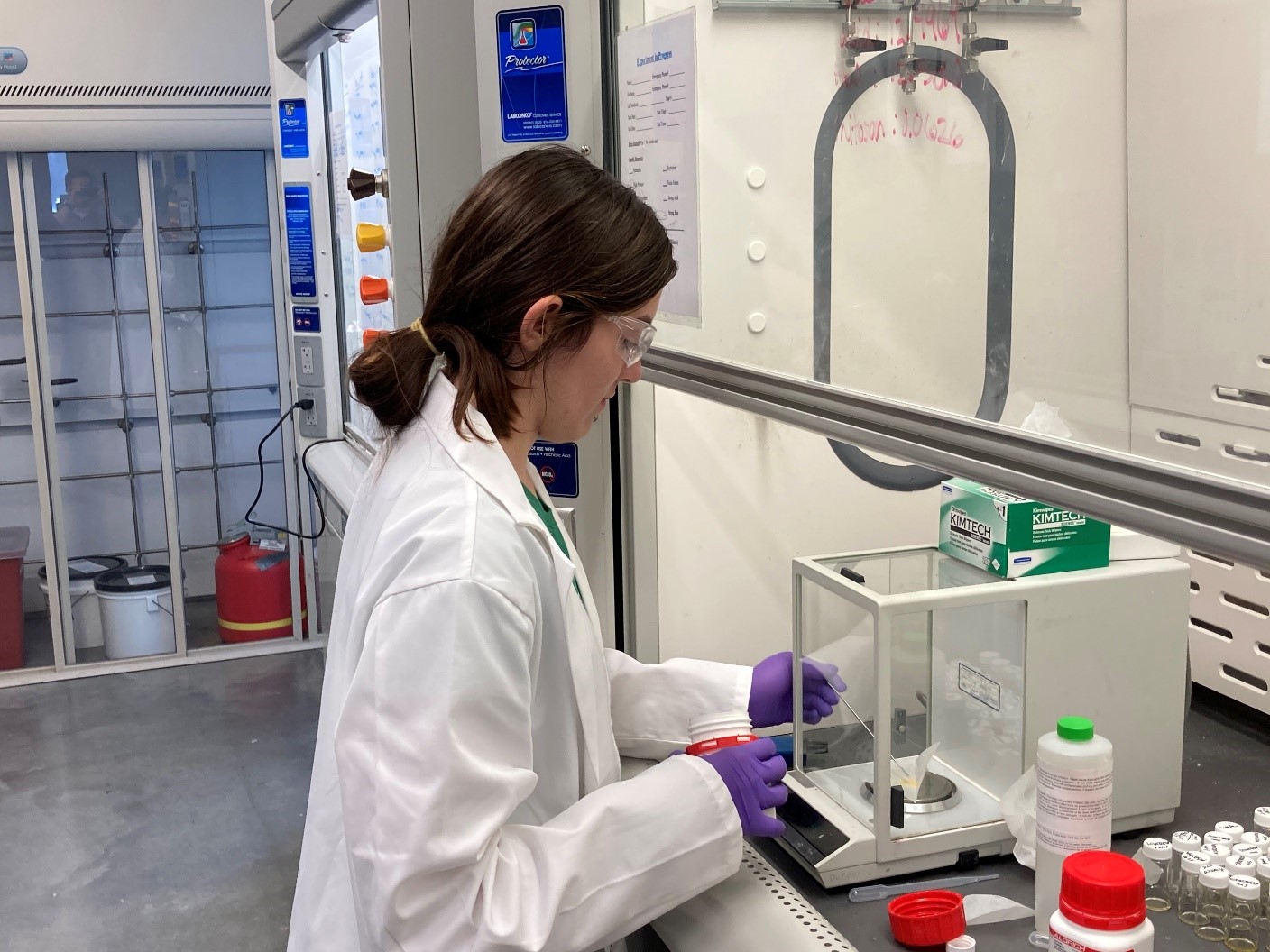
The REU participant Isabel Knight is a rising junior in Chemical Engineering from Notre Dame University (South Bend, IN). While at KU, she worked with the Ph.D. students Murilo Suekuni and Victor Sharma. Her project involved the immobilization of alcohol dehydrogenase enzymes in chitosan-alginate hydrogels, supporting on-going efforts on bio-catalyzed cascade reactions. Isabel optimized the enzyme-immobilization procedure, characterized the obtained hydrogels using time-domain nuclear magnetic resonance (TD-NMR), and ran multiple reactions to compare the activity of free and immobilized enzymes. The obtained results are extremely valuable in advancing the understanding about enzyme immobilization, which may directly benefit the corn market in Kansas and other parts of the country.

In a collaboration with Dr. Stevin Gehrke’s group, Gracyn Reynolds, a Junior Chemical Engineering student from the University of Oklahoma (Norman, OK) worked on the characterization of poly(ethylene glycol diacrylate) (PEGDA) hydrogels at varying conditions under the mentorship of the Ph.D. students Joe Scalet (Gehrke Group) and Murilo Suekuni (Allgeier Group). Similar to Isabel, Gracyn applied TD-NMR to characterize the mesh size of her PEGDA hydrogels, elucidating the effects of varying polymer concentration and molecular weight. She compared the mesh size calculated from the TD-NMR data with trends from dynamic mechanical analysis (DMA) performed at KU and scattering data from the literature. By deploying TD-NMR for the characterization of the mesh network of hydrogels, the Allgeier and Gehrke groups aim to promote a simpler but informative technique.
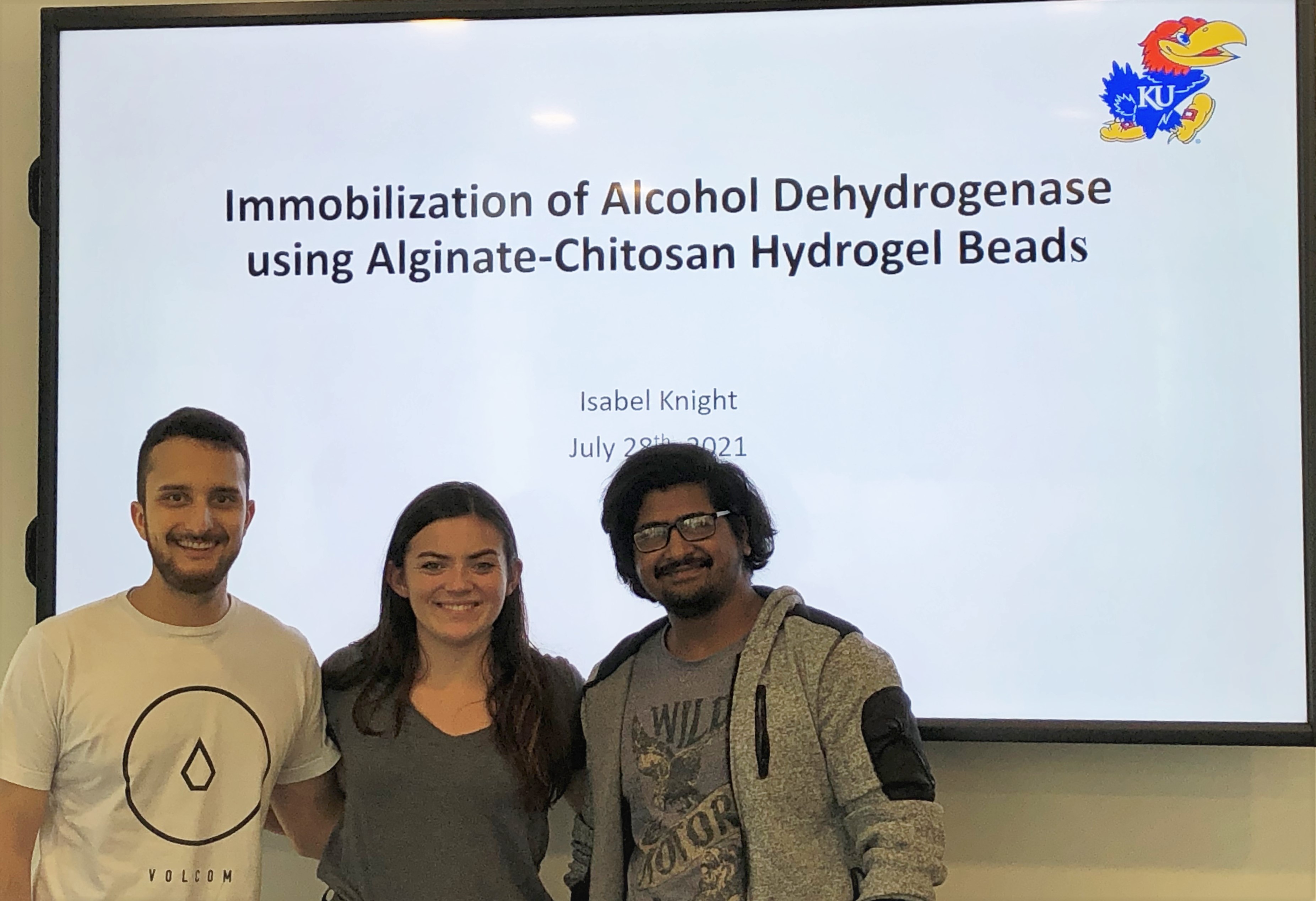
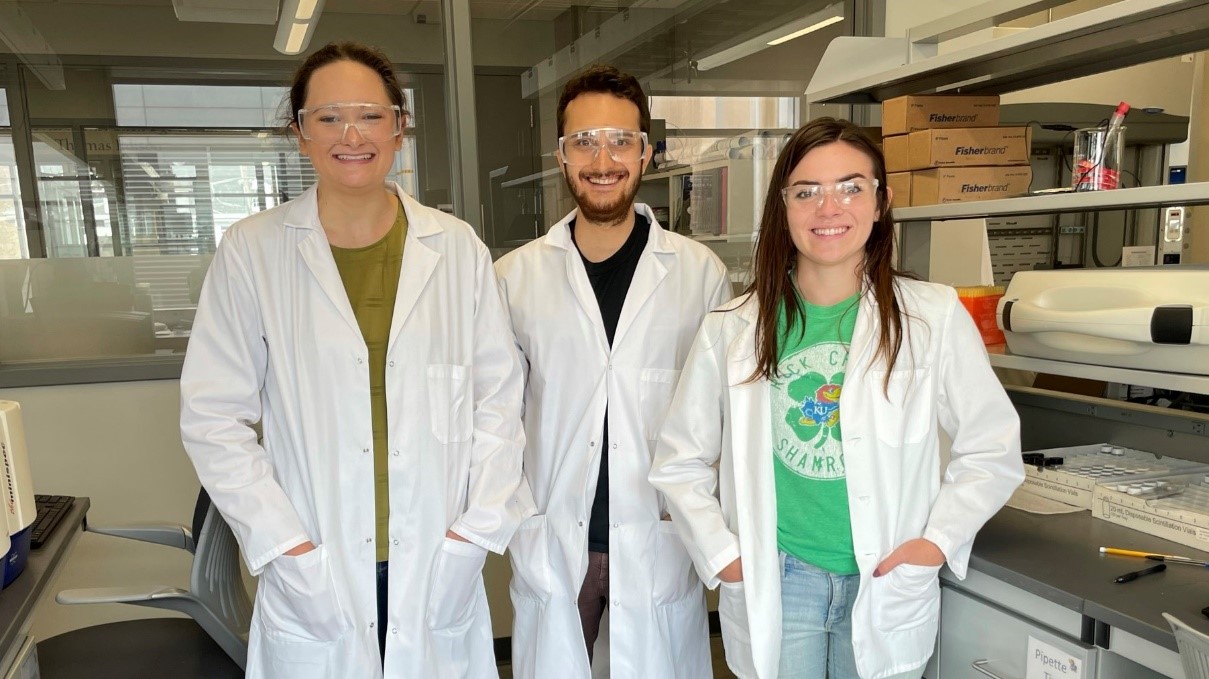
RET Participants
Only a few miles away from theirs schools, the teachers Art Ballos (Physics, Wichita East High) and Barry Richards (Math, Wellsville High) embarked in a fun scientific experience at KU. With the objective of inspiring high school students to pursue future careers in STEM (science, technology, engineering and mathematics), they studied the microstructure of hydrogels. Their goal was to design a lesson-plan involving the complex concepts from engineering research laboratories, which could be easily replicated at their schools.
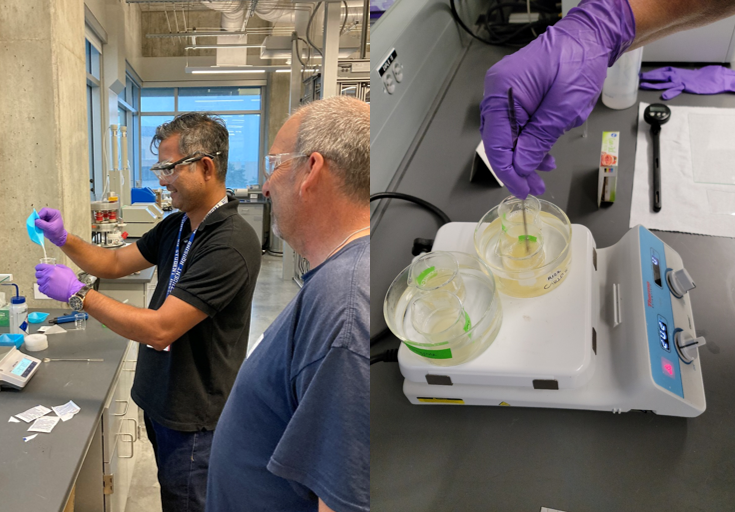
Firstly, using a handcrafted compression device, they studied cylindrical gelatin samples at different concentrations. By varying the content of gelatin, Art and Barry observed the effects on the strength of the created samples, understanding how important this feature is for the design of scaffolds for human implants.
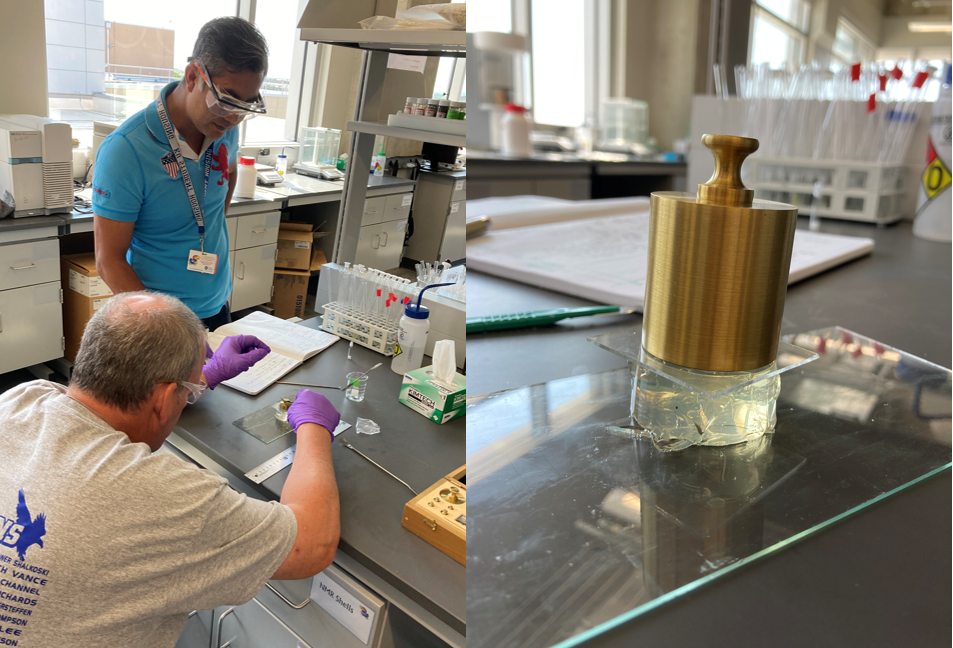
In a separate set of studies, the diffusion of drugs was mimicked using gelatin at different concentrations and food coloring. Solutions of red food dye were placed on the top of cross-linked gelatin and the dye diffusion was observed over the course of 72 hours. The concentration of gelatin once again played a key role in the results, where the slowest diffusion of dye occurred for the most concentrated gelatin sample.In a separate set of studies, the diffusion of drugs was mimicked using gelatin at different concentrations and food coloring. Solutions of red food dye were placed on the top of cross-linked gelatin and the dye diffusion was observed over the course of 72 hours. The concentration of gelatin once again played a key role in the results, where the slowest diffusion of dye occurred for the most concentrated gelatin sample.
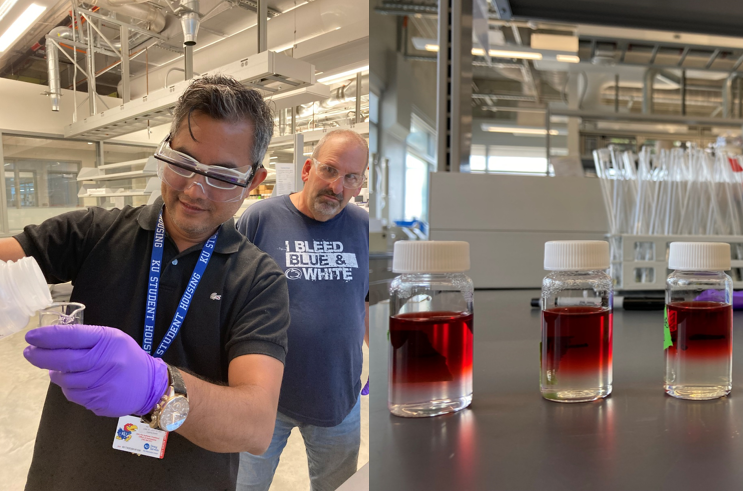
In addition to the compression and diffusion experiments, Art and Barry also participated in TD-NMR analyses of their gels and visited Dr. Stevin Gehrke’s laboratory, expanding their knowledge about the research being developed by other faculty members from the Chemical and Petroleum Engineering Department (C&PE) at KU.
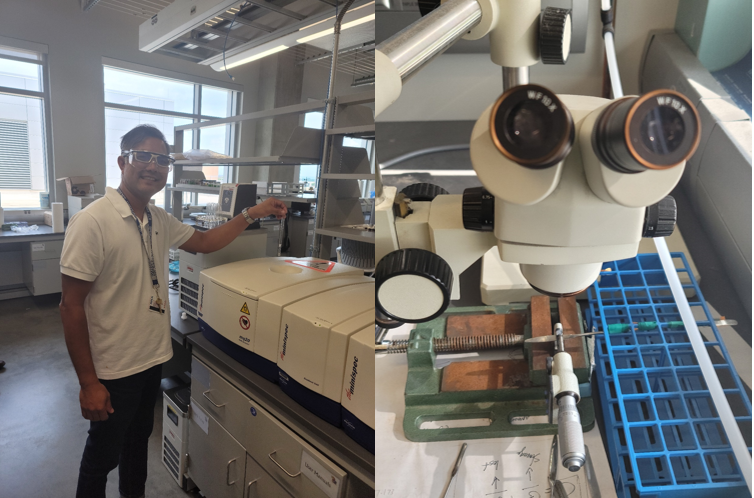
Presentations and Workshops
To wrap up of the REU and RET experience, the four participants presented their work in different sessions at the KU engineering complex and the integrated science building (ISB) at KU.
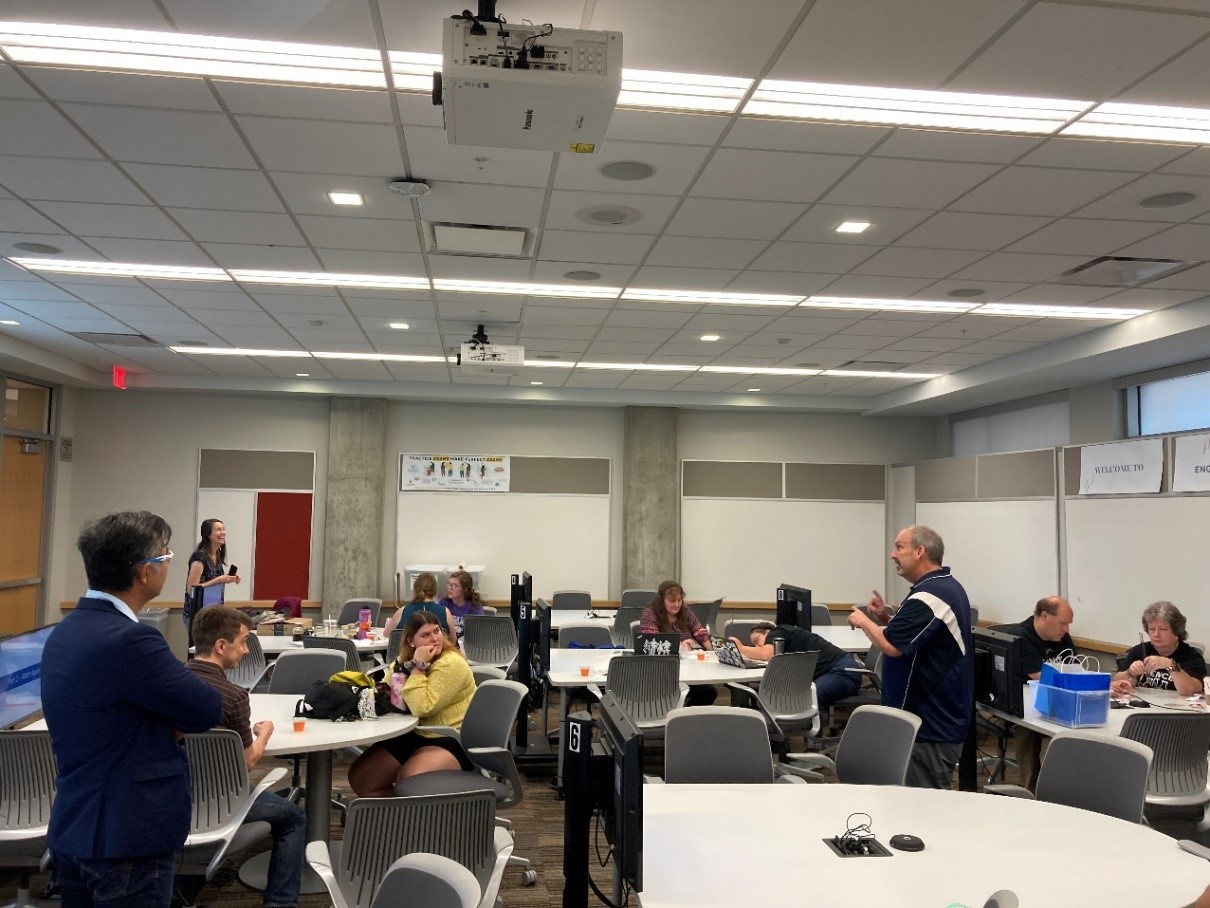
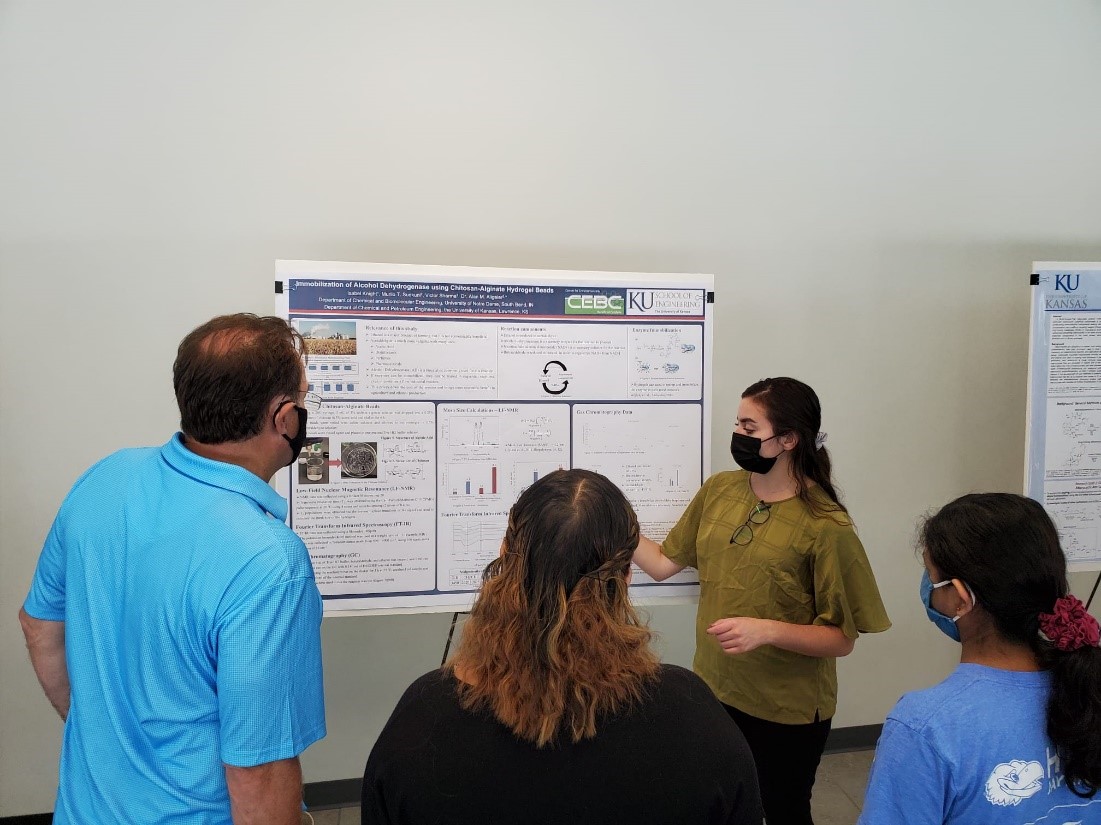
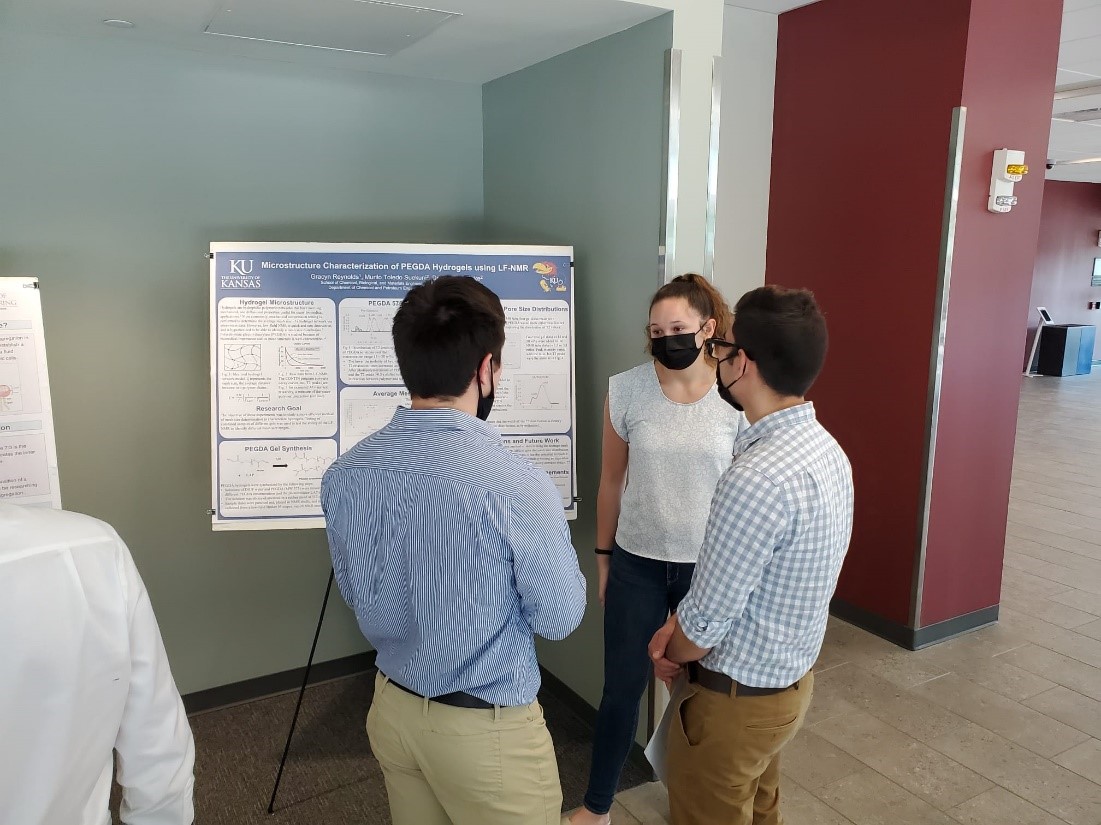
For more information about the research experience for undergraduates and teachers, please contact us.